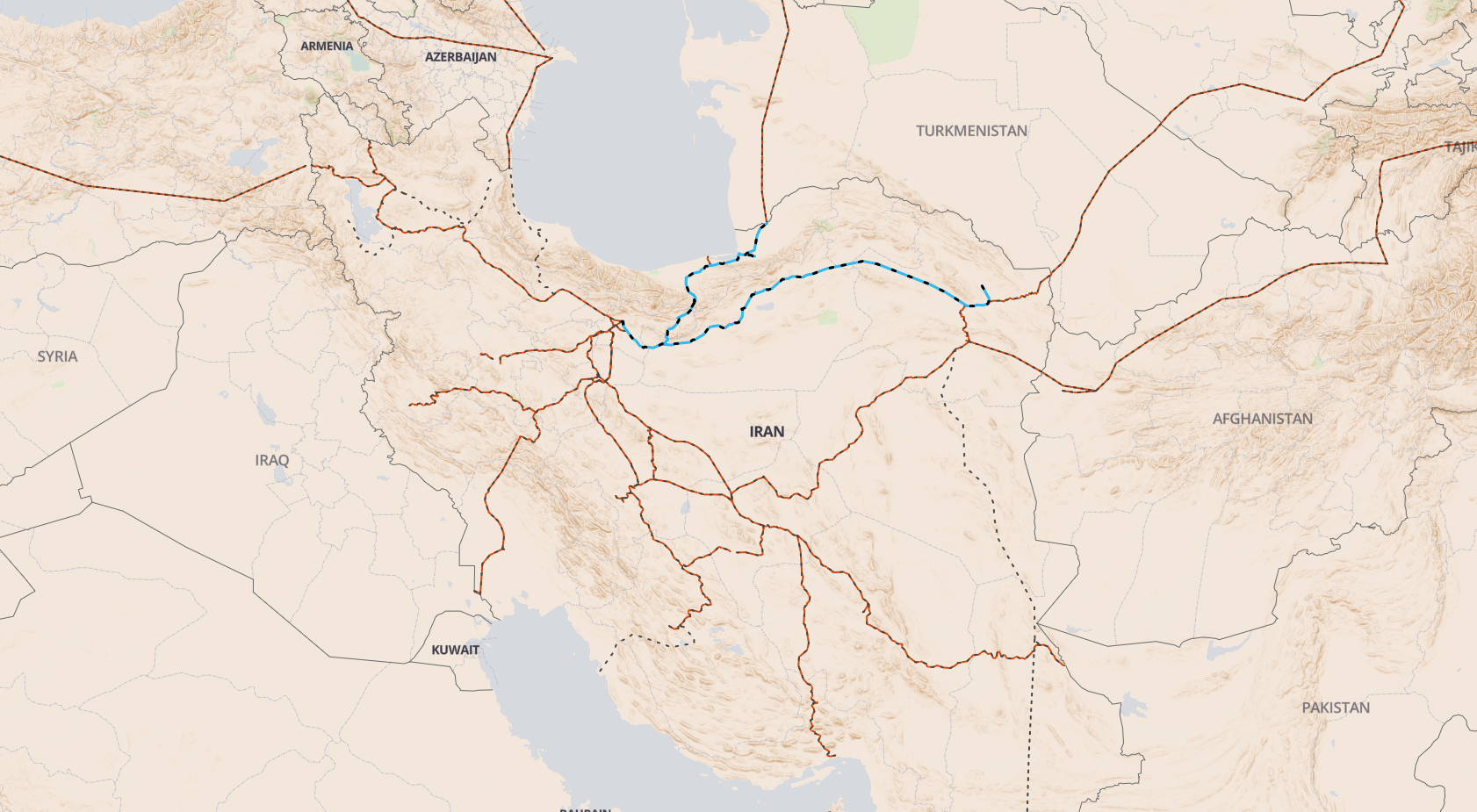Iran Railroad Projects Endure Despite Sanctions

EghtesadOnline: Iran’s rail sector could be named the top beneficiary of the nuclear deal the country signed with world powers in 2015, as it has managed to considerably improve its performance in the past three years.
The progress also seems to be resilient to the impact of the US administration’s withdrawal from the deal, announced in May 2018, thanks to the Iranian government’s effective policies, the country’s strategic location and the commitment of its major partners.
Data released by the Islamic Republic of Iran Railways show that the volume of freight transit through Iranian railroads reached an all-time high of 1.5 million tons in the last Iranian year (March 2017-18).
Iran exported 11.9 million tons of oil and non-oil goods through railroads last year, which is also an all-time high. The volume of imports through railroads stood at 3 million tons–the highest since 2013, Financial Tribune reported.
World Economic Forum’s Global Competitiveness Index report for 2017-18 ranks Iran 42nd worldwide in terms of the quality of railroad infrastructure. Iran was ranked 46th in 2016-17.
The country has signed several deals with major foreign companies active in the rail sector as well as with financiers since January 2016 when the nuclear deal was implemented. But the US’ abrupt move to leave the international agreement raised concerns over the future of the deals.
Following US President Donald Trump’s May 8 announcement of intention to revive sanctions against Iran, some European firms chose the easy way out of their deals with Iran. However, the number of rail-related firms that have left Iran in recent months is considerably lower than those active in other sectors.
In fact the key issue for Iran is that its major Russian and Chinese partners have remained true to their commitments under the nuclear deal, formally named as the Joint Comprehensive Plan of Action.
IRIR has even announced that “if sanctions are reimposed, Russian and Chinese companies will replace European firms”.
Russia
The Russian-backed project for the electrification of Incheh Borun-Garmsar officially started last week.
“This project is the biggest sign that Iran’s partners are eager to remain committed to their deals even after the unilateral US withdrawal from the nuclear agreement,” said Iranian Minister of Roads and Urban Development Abbas Akhoundi on the sidelines of the ceremony to mark the commencement of work on the railroad.
Russian Railways’ CEO Oleg Belozerov also stressed that his firm will meet its commitments regarding transfer of technology to Iran and training Iranian technicians.
“In Iran, we will be engaged in electrification, which is related directly to rail transport. We believe that this is a completely civilian project that does not fall under the [US] sanctions, but we are clarifying it,” he said earlier this month.
In December 2017, Iran and Russia signed a deal to finance €3 billion for the joint manufacture of 20,000 freight cars, 1,000 passenger cars, 350 locomotives as well as rail transportation equipment. So far, Iran has received 400 freight wagons on order.
Russia’s UralVagonZavod also expressed interest in resuming the export of freight wagons to Iran in a recent meeting with Iran’s Deputy Industries Minister Borat Qobadian in Russia.
The Russian firm also showed interest in the joint production of wagons inside Iran, IRNA reported on Tuesday.
China
The electrification of Mashhad-Tehran railroad is Iran’s largest rail project initiated after the lifting of sanctions. The $1.5 billion deal was signed last July.
Later in December, it was announced that Exim Bank of China had opened a line of credit for the development of the project.
Earlier this month, Deputy IRIR Director Hussein Ashouri announced that the project would start within two months.
The electrification project is being carried out by China National Machinery Import and Export Corporation, otherwise known as CMC. Iran’s MAPNA Group is the main contractor of the project.
A sales official at China’s CRRC has said US sanctions will not challenge his company’s presence in Iran.
Earlier in March, the company signed a contract with the Industrial Development and Renovation Organization of Iran for the design, procurement, supply, manufacture and delivery of 450 subway wagons for the Iranian cities of Ahvaz, Shiraz and Tabriz.
Also in March, China Railway Rolling Stock Corporation Changchun Railway Company won the tender to build and supply 630 cars for Tehran’s Subway.
In late May, it was announced that the finance and construction contract for Gorgan-Bojnord-Mashhad Railroad worth 100 trillion rials ($2.38 billion) was finalized between Iran’s Ghods Razavi Housing and Construction Company and a Chinese company.
There are also several European firms who have not announced plans to leave projects in Iran.
In June, Iran’s state rail company signed a memorandum of understanding with Switzerland’s rail tracks maintenance machines manufacturer Matisa for obsolescence management.
The Ministry of Roads and Urban Development’s website last week interviewed representatives of German, Swiss and Turkish rail companies at a rail expo in Tehran, reporting that they have long-term plans to work in Iran.
Rail development plans are not solely based on foreign partnerships. The government is investing about $1 billion annually on development of rail projects, according to IRIR officials.
Recently, some 1.05 trillion rials ($25 million) worth of Islamic bonds (sukuk) have been issued to fund the manufacturing of 50 locomotives by Iran’s Wagon Pars Company.
The government has also called for private sector participation in rail and wagon projects, saying that it would provide them with incentives and guarantees.


